"Whenever I saw Ken coming to the wicket I thought a Union Jack was trailing behind him," Wally Grout, the Australian wicketkeeper, famously said of Englishman Ken Barrington. Borrowing Grout's thoughts, one can say without any fear of contradiction that the Indian tricolour flutter proudly when Viswanathan Anand, Sachin Tendulkar and Leander Paes take their places in their respective sporting endeavours. Arunabha Sengupta looks at the fabulous careers of the troika, all past age 40, who continue to be the heartbeats of the nation.
The League of Extraordinary Gentlemen
Three inspirational trendsetters, three magnificent maestros, three dazzling phenoms. They appeared almost in unison, in a spectacular blaze. They zoomed across a sporting firmament that at the time of their arrival was pitch black — but for occasional solitary singular flashes. The three trailblazers set alight a torch largely unknown in the sporting history of the nation, and the flame sparkled around the world and across decades. And it continues to burns bright — against all odds and expectations, challenging the unforgiving passage of time.
Viswanathan Anand was born in the last month of 1969. Sachin Tendulkar and Leander Paes followed within two months of each other in 1973.
They grew up in an era when India was dogged by stagnating economy, daily grind, license raj and rampant corruption. Every ounce of energy was spent in the fag and drudge of life — the country waded through the heavy residuals of bureaucracy, chugged along the ancient trodden paths that lagged decades behind modernisation. Sports remained relegated to the distant back-pages of the politics heavy dailies. The common man was too busy wiping the sweat of the brow to appreciate the persevering sportsmen who were sometimes gallant but seldom reached the pinnacle in their disciplines.
Even the hockey team had stopped winning the regulation Olympic Gold after 1964; only a spate of boycotts by Western Bloc countrieshad enabled the national team to win one more at the 1980 Moscow Games.
Sunil Gavaskar did produce promising glimpses of sunny days, and the country did win the World Cup in 1983 under Kapil Dev. But the team lagged far behind the best in the world. In 1960s they had been the dull dogs of cricket. The 1970s and 1980s had performed major facelift for the image, but they were not world beaters by any means. Certainly not in Test cricket
Ramanathan Krishnan occasionally overcame a legend like Rod Laver. Once in a while Vijay Amritraj took two sets from Jimmy Connors before succumbing to the pressure of the Wimbledon quarter-finals. Ramesh Krishnan upset many big names in the initial rounds, but stumbled regularly as tournaments wore on. In a spate of ethereal touch play and burning zeal, India did overcome Australia in the Davis Cup semi-final of 1987, but were decimated by Sweden in the title round.
And it had been a long while since Sultan Khan’s unorthodox knight opening on the chequered board had overcome Jose Raul Capablanca in 1930.
At this juncture,splashed the waves of modernisation. Economic liberalisation and globalisation rushed forth in the wake of the International Monetary Fund (IMF) bailout. In early 1990s, foreign investments grew exponentially, the youth of the day shuttled around the world, crossing borders, earning like never before, with a degree of confidence that had never graced the earlier generation of salarymen. India emerged as a force to reckon with on the global map. And as a symbol of this new India the sporting arena was suddenly dazzled by three glittering jewels who reached the very peak of their respective areas like no Indian sportsman had done.
As the century drew to a close, Anand, Tendulkar and Paes ensured that India was no longer a mere pushover at the rear end of the sporting world.
In January 1999, Sachin Tendulkar was acknowledged as the best batsman of the world, sitting at the top of the International Cricket Council (ICC) rankings, making India believe that even the impossible could be achieved. By June that year, Leander Paes had climbed the No 1 in the ATP Doubles Rankings. And in 2000 at Tehran, Viswanathan Anand won the FIDE World Chess Championship for the first time.
Never before had three sporting beacons cast such a collective glow in the sphere of Indian sports. By this time they had already ruled the sporting consciousness of the nation for a decade and more.
And they kept the flame alive with undiminished brilliance. By the end of the next decade, they had reached a level of enlightenment in their respective fields that left room only for achievements that were close to esoteric, beyond the reach and imagination of mortals.
In 2010, Tendulkar scored the first-ever double hundred in One-Day Internationals (ODIs), followed it up with a match-winning 214 and 53 against Australia at Bangalore and ended the year with his 50th Test hundred at Centurion against Dale Steyn, the best fast bowler of the world.
Anand overcame a flight delay due to the erupting volcano Eyjafjallajökull, and underwent a harrowing 40-hour road journey before defeating Veselin Topalov to secure the World Championship. In the sixth game he made 13 consecutive moves with the knights, leading commentators to wonder whether he was trying to solve the Knight’s Tour Problem.
Paes finished runner-up in the men’s doubles at French Open and won the mixed doubles titles at Australian Open and Wimbledon.
All three stalwarts have crossed the sporting old-age of 40, but they gloriously continue their lofty, defiant journeys.
Paes has just won the doubles title at the US Open, Anand is set to defend his title against Magnus Carlsenand and Tendulkar is on the verge of playing his 200th Test match.
Let us take a look at the achievements of these three masters — tracing them from the very beginning when each set out in their quest for excellence.
Chess being a board game, Anand started early. And by virtue of birth, he also had four years head-start on the other two.
The 1980s
It was in 1975, as a six year old, that Anand was introduced to chess.
And in 1983, as the other two were finding their respective ways to the cricket field and the tennis court, the 13-year-old Anand had already beaten Manuel Aaron, the top player in India.
In 1984 as Tendulkar got introduced to Ramakant Achrekar at Shivaji Park, Anand had already commenced his avalanche of deeds on the board. He tied for the second place in the World Sub-junior Championship, was made an International Master, won the National Junior Championships in Goa, the Asian Junior Championship at Coimbatore, the Lloyd’s Bank Junior Tournament and also participated in the Chess Olympiad.
In 1985 as Paes entered the Britannia Amritraj Tennis Academy, Anand retained the Asian Junior title Championship at Hong Kong and was awarded the Arjuna Award.
The year 1986, saw Anand win the Senior National Championship for the first time at the age of 15. He also represented India in the Asian Team Championships, and the side won the silver. In the tournament, Anand was the board prize-winner.
The year 1987 saw Anand defending the national title and winning the Arab-Asian International Chess Championship. He also became the first Asian to win the World Junior Chess title. That year saw him get an Elo rating of 2500, a first for an Indian. And in December, at the age of 18, he became India’s first Grandmaster by achieving his final norm in the Shakti Finance GM tournament at Coimbatore.
The year also saw Tendulkar make some rapid strides. In October, he hovered around the boundary line at the Wankhede in Mumbai as a ball boy during the World Cup, getting his first feel of an international match. By December he had broken into the Bombay Ranji Trophy side.
In 1988 Anand won the 51st Hoogoven's Chess Tournament at Wijk Aan Zee, becoming the first Asian to do so. He also successfully defended his national title and was awarded the Padma Shree.
That February, Tendulkar scored 326 not out while adding 664 with Vinod Kambli for Shardhashram Vidyamandir in their Harris Shield Inter-Schools Championship against St. Xavier’s. It was then the world record for any wicket in any grade of cricket. His total aggregate for that year in Harris Shield was 1025, including back-to-back triple hundreds in the semi-final and final. By December, he had made his First-Class debut, scoring an unbeaten 100 against Gujarat in the Ranji Trophy encounter.
The year 1989 saw Anand playing in the first ever National Rapid Chess championships in Pune, which he won comfortably. He participated in one of the strongest open tournament in history — the GMA World Cup Qualifier — and ended fourth. It was also the first of the many times he triumphed in Corus Chess Tournament.
In the Irani Trophy,Tendulkar scored an unbeaten 103 against Delhi — the knockwas instrumental in winning him a place in the Indian team for the tour of Pakistan. In November, he made his Test debut at Karachi, making his first half-century nine days later at Faisalabad. In the fourth Test at Sialkot, he was hit on the nose by Waqar Younis and continued to bat, scoring 57 and helping India save the Test against an attack that also included Imran Khan, Wasim Akram and Abdul Qadir. Two days later, in an unofficial limited-overs match at Peshawar, he hammered Qadir for four sixes on the way to an unbeaten 53 off 18 balls.
The 1990s
In 1990, was the year that witnessed three-pronged brilliance in the sporting arena for the first time. Much of it took place in England. In between winning the gold medal in the Asian Zonal Championship and the Asian Open Chess Championship, Anand triumphed in the Manchester Chess Festival.
At Napier, Tendulkar fell 12 short of becoming the youngest-ever to score a Test century. It was at Manchester that he got there, scoring 119 and winning the Man of the Match award, saving India from yet another defeat. By the end of the year, he had won his first Man of the Match award in ODIs as well, with a fine all-round performance against Sri Lanka at Pune.
It was during that English summer that Paes emerged on the scene in fantastic colours. While Tendulkar and Anand performed their magic at Manchester, Paes fought his battles down south and held aloft the Junior Wimbledon title. At the age of 16, he partnered Zeeshan Ali to defeat Japan in the Davis Cup.
In 1991, Anand became the first Asian to enter the quarter-final of the FIDE World Championships when he defeated Alexy Dreev at Madras. He subsequently lost in the quarter-final to Anatoly Karpov at Brussels. He also won the category-18 Reggio Emilia Super GM tournament in Italy, a tournament that included Gary Kasparov and Anatoly Karpov.
Tendulkar scored 159 on his Duleep Trophy debut, becoming the first player to achieve the feat in his first match in Ranji, Duleep and Irani Trophies. He ended the year by getting Andy Cummins caught at slip to secure a tie against West Indies after India had scored just 126 at Perth.
Paes turned professional and rose to No 1 in world junior rankings.
The year 1992 was the year of the Chess Olympiad at Manila, and Anand captained the Indian team. He remained unbeaten throughout while playing the top board. He went on to win the Linares tournament by defeating Vassily Ivanchuck 5-3. Another triumph came in the Alekhine Memorial Championship at Moscow.
Tendulkar conquered the Southern Hemisphere, scoring 148 not out at Sydney, 114 on a fiery wicket at Perth and ending the year with 111 at Johannesburg. He also completed his 1000 runs in Test cricket. He personally had a brilliant World Cup, scoring 283 runs at 47.16, but India failed to qualify for the semi-finals. That was the year he also became the first overseas professional to be signed by Yorkshire.
Paes teamed up with Ramesh Krishnan to reach the quarter-final in the Barcelona Summer Olympics.
In 1993, Anand qualified for the first Candidates Tournament, losing his quarter final match narrowly to Karpov. He won the PCA Inter-Zonal championships at Groningen, Switzerland.
Tendulkar scored his first Test hundred on home soil, hammering 165 against England at Chennai in an innings victory. In July he was named vice-captain to Mohammad Azharuddin. Sri Lanka and in the series scored a crucial unbeaten century in India’s first overseas win since 1986. The year ended with the Hero Cup triumph, made memorable by his last over against South Africa that clinched a tantalising win after only six runs were required in front of a rampaging Brian McMillan.
Paes and Krishnan defeated Jakob Hlasek and Marc Rosset in the Davis Cup quarter-final at the South Club in Calcutta. Paes triumphed against Hlasek in straight sets and teamed up with Krishnan to win the doubles. At Frejus he beat both world number 25 Arnaud Boetsch and the famed Henri Leconte as India overcame France in the semis. The win over France, significantly, came on clay. The final against Australia was not that memorable. He also partnered Sébastien Lareau to reach the US Open doubles semi-final.
In 1994, saw Anand win the Melody Amber Rapid Tournament at Monaco, the PCA Grand Prix at Moscow ahead of Gary Kasparov, and the World Championship Candidates tournament at Linares defeating Britian's Michael Adams to qualify for the final.
In a significant move, Tendulkar opened the batting for the first time in ODIs and scores a blistering 82 of 49 balls in New Zealand. By September he had scored the first of his 49 ODI hundreds, in his 79th game, against Australia at Colombo. Before ending the year, he had hammered a match-turning 85 against West Indies at Bombay and followed it up with 179 at Nagpur. On November 18, he reached the No 1 rank among Test batsmen for the first time. By the end of the year, he had received the Arjuna Award.
In the midst of a rather mediocre year, Paes pulled off a miracle to beat world No. 13 Wayne Ferreira in straight sets in the Davis Cup tie against South Africa.
In 1995, Anand won the World Championship Candidates tournament at Las Palmas by defeating Gata Kamsky to qualify for the World Championship against Kasparov. He lost in the showdown at World Trade Centre in New York by 10.5 to 7.5.
Tendulkar blazed to 112 not out from 107 deliveries against Sri Lanka in the stifling heat of Sharjah before tying the knot with Dr Anjali Mehta. He ended the largely cricket-less year by securing Rs.30 crore contract with WorldTel.
Paes reached the quarter-final in the Australian Open Doubles with Kevin Ullyett as partner. However, in another inspired piece of Davis Cup magic, he beat world No 7 seven Goran Ivaniševi in a five setter, that too on grass.
The year 1996, dawned with Anand ending joint winner with Vladimir Kramnik in the prestigious Dortmond Tournament in Germany. Following this he defeated world No 1 Gary Kasparov to win the Credit Suisse Masters Rapid Chess Tournament. This was followed by the Super Cup at Las Palmas, considered the strongest tournament of all time. Anand finished as runner-up.
Tendulkar became the highest run-scorer in the World Cup by amassing 523 at 87.16 with two hundreds.It was his dismissal at 67 in the semi-final which triggered the Indian collapse against Sri Lanka at Eden Gardens. On February 29, he reached the No 1 in ODI batting ranking for the first time in his career. In Test cricket, he scored a scintillating counter-attacking 122 in the Test at Birmingham, one of the best innings in crisis, and followed it up with 177 and 74 at Nottingham. By the end of the year he was the captain of India and had scored six centuries in ODIs in the last 12 months.
At the 1996 Atlanta Olympics, Paes was ranked 127th in the world and needed a wildcard to enter the main draw. He proceeded to have a dream run before coming up against Andre Agassi in the semis.The American triumphed, but later recalled Paes as: “a flying jumping bean, a bundle of hyperkinetic energy, with the tour's quickest hands.” Paes beat Fernando Meligeniin the third place play-off, thus becoming the first Indian to win an individual Olympic medal since KD Jadhav’s wrestling bronze at the1952 Helsinki Games. In Davis Cup, he defeated the world No 20 Dutch player Jan Siemerink. By the end of the year, Paes had been honoured with the Rajeev Gandhi Khel Ratna.
In 1997, Anand won The Torneo de Ajedrex at Dos Hermanas, and at the Melody Amber in Monaco he became the first player to win both the blind fold and rapid chess sections. He played four computers simultaneously in the Aegon Man versus Computers event and won 4-2. He also won the Invesbanka Chess Tournament at Belgrade, the Credit Suisse Classic in Biel and the Knock-Out Championship in Groningen. Anand was conferred the prestigious Chess Oscar in a poll by chess journalists from 55 countries in the world. He was the first Asian and the second non-Russian, after American Bobby Fischer, to receive the award.
Tendulkar started the year with a breath-taking 169 at Cape Town and scored three more Test hundreds, amassing 1000 runs in the calendar year in both Tests and ODIs. He was named one of the Wisden Cricketers of the 1997.
Paes and Mahesh Bhupathi won ATP tournaments in Chennai, Prague, Montreal, New Haven, Beijing and Singapore and were Runner-up in Hartford. They reached the semi-final in the US Open. In the Davis Cup against Czech Republic, Paes overcame Ji í Novák but lost to Peter Korda as India were defeated 2-3.
The year 1998 saw Anand losing in the final of the World Chess Championships at Groningen to Karpov. He won the 60th Hoogoven's Schaak Tornoi, Wijkaan Zee, the Torneo International De Ajedrez at Linares and the Fontys-Tilburg International Chess Tournament. In the Rapid version, he triumphed in the Siemens Nixdorf Duell.
Tendulkar was named the Man of the series in the Silver Jubilee Independence Cup at Dhaka where India triumphed 2-1 in the final. In March he scored a superlative match-winning 155 not out at Chennai to pulverise Shane Warne with scintillating strokeplay. He followed it up with another big hundred at Bangalore. In the ODIs, he got his first five wicket haul at Kochi against the Aussies. And then, he continued his amazing run against them with two whirlwind knocks in Sharjah, a brilliant 143 to take India to the title round and a superb match-winning 134 in the final. He went on to score 128 in a 252 run opening stand in the final of the Singer Akai Nidahas Trophy, and India won the match by six runs. In August the Rajiv Gandhi Khel Ratna Award was bestowed on him. The following month, he scored his 18th ODI hundred to go past Desmond Haynes’ record. He ended the year with a breath-taking 124 not out in the Champions Trophy tri-series final in Sharjah. He ended the year with a skilful 113 in difficult conditions in Wellington.
Paes won his only ATP singles tournament, beating Neville Godwin in the Newport Open. With Bhupati, he won tournaments in Doha, Dubai, Chennai, Rome, Shanghai and Paris, finishing runner-up in Singapore and Stuttgart. The Paes-Bhupathi duo reached the semis in the Australian, French and US Opens. At the New Haven ATP tournament, Paes defeated Pete Sampras 6-3, 6-4.
In 1999 Anand won the Rapid tournament Wydra Memorial Chess at Haifa and followed it up by beating Karpov 5-1 in the Torneo Magistral de Ajedrez.
Tendulkar struck a brilliant 136 not out against Pakistan at Chennai, fighting a supreme bowling attack and a back injury. However, India scored six runs before he came in, and four after he left, losing the Test by 12 runs. A couple of months later, he was awarded the Padma Shri. He returned to India during the World Cup in England after the death of his father, and went back to score a hundred against Kenya. Made captain yet again, he scored his first double hundred in Test cricket at Ahmedabad against New Zealand. He ended the year with a record breaking ODI knock of 186 not out against the same opponents at Hyderabad.
Paeswon ATP tournament in Chennai with Bhupathi, while triumphing at Hertogenbosch alongside Jan Siemerink and at Newport with Wayne Arthurs. This was also the first year of Grand Slam success. Paes and Bhupathi won the French Open defeating Goran Ivanisevic and Jeff Tarango 6-2, 7-5 and followed it up with triumph in the Wimbledon beating Paul Haarhuis and Jared Palmer 6-7, 6-3, 6-4, 7-6. The duo were runner-up at both Australian Open and US Open. At the Wimbledon, Paes paired with Lisa Raymond to win the mixed doubles title as well. He held the number one rank in doubles for 39 weeks from June 1999.
2000s
In 2000, Anand was the winner at the GSM World Blitz Chess Cup at Warsaw, Polandand also bagged the Wydra Rapid Chess title in Haifa, Israel. He lost to Kasparov of Russia in the Iceland Rapid Chess tourney at Kopavogur, Iceland. He went on to win the Torneo Magistral de Ajedrez and Fujitsu Siermens Giant Chess. In traditional Chess, he beat Spain’s Alexei Shirov to retain the Advanced Chess title in León Games. He also emerged the joint winner with Russian Vladimir Kramnikin the Sparkassen Meeting in Dortmund, Germany. He went on to win the star studded Fujitsu Siemens Giants Rapid Chess Meet, Frankfurt ahead of World No 1 Gary Kasparov, the World Chess Cup at Shenyang, China. At New Delhi, he defeated Briton Michael Adams at New Delhi to qualify for the FIDE World Chess Championship at Tehran, where he beat Spain's Alexei Shirov 3.5-0.5 to become the 15th FIDE World Chess champion. At the end of the year, he ended with an ELO rating of 2774 and was ranked No 2 behind Kasparov. This year, he was honoured with the Padma Bhushan.
Tendulkar scored a superb 233 not out to help Mumbai beat Tamil Nadu in the Ranji Trophy semi-final. He hammered 1328 runs in ODIs with three hundreds, and went past Mohammad Azharuddin’s record of 9,378 ODI career runs to become the leading run scorer in the world. In Tests he scored his second double hundred, against Zimbabwe.
Paes carried the Indian flag during the opening ceremony in the Sydney Olympics. However, Paes and Bhupathi ran into the celebrated pair of Todd Woodbridge and Mark Woodforde in the second round and bowed out. He won ATP tournaments at Orlando with Siemerink and at Tokyo with Bhupathi.
The year 2001 was a comparatively quiet one for Anand, but he was bestowed with the Jameo de Oro, the highest honour given by the Government of Lanzarote in Spain. He also finalised his book My Best Games of Chess. The other major achievement of the year was his triumph in the "Duel of the Champions", defeating Vladimir Kramnik in a rapid game match 6.5-5.5.
Tendulkar scored a pivotal 126 in the deciding Test at Chennai against Australia in the famous 2000-01 series. This was followed by his becoming the first man to score 10,000 ODI runs, while scoring 139 against Australia at Indore. In Bloemfontein, he rescued the Indian first innings against fiery bowling by hammering a splendid 155. He ended the year with scores of 88, 103 and 90 in the three Tests at home against England, leading the visitors to claim that they had restricted the great man. This year he also scored 904 ODI runs at 69.53 and was honoured with the Maharashtra Bhushan, the highest civilian award of the state of Maharashtra.
The sage of success with Bhupathi continued as Paes teamed up with his countryman to win ATP tournaments at Atlanta, Houston, Cincinnati and Chennai. The duo triumphed in the French Open as well. With Lisa Raymond, Paes finished runner-up in the US Open. That year he was awarded the Padma Shri.
In 2002, Anand won the Eurotel Combined Rapid plus Classical tournament in Prague. However, he lost in the semi-final to Vassily Ivanchuk. He won in rapid chess tournaments in Corsica and Leon.
Tendulkar scored 117 in India’s first Test victory in West Indies in 26 years, and followed it up with 193 at Headingley in another famous win, which carried him past Bradman’s 29 centuries. In between he had hammered two hundreds in the NatWest Trophy. Towards the end of the year, he scored 176 at Eden Gardens against West Indies to save India from a defeat on the final day, and signed off with a gritty 51 in obnoxious batting conditions at Wellington.
It was a relatively quite year for Paes, with just one ATP win — at Majorca alongside Bhupathi. Paes and Bhupathi also won the gold at the Asian Games at Busan. They reached the semi-finals in the French Open.
In 2003, Anand won the 65th Corus Chess Tournament at Wijkaan Zee. This year he also became the FIDE World Rapid Chess Champion by winning the Cap D'Agde FRA. Another Monaco Amber triumph was added. He won another Chess Oscar this year.
As India kick-started their World Cup campaign, Tendulkar became the highest run-getter in the tournaments when he overtook Javed Miandad’s tally of 1083 runs during a game against Netherlands. He smashed 98 off 75 balls against Pakistan to take India to victory in a crunch match. He ended as the highest scorer of the World Cup but India lost the final to Australia. Tendulkar won the Man of the Series for his 673 runs at 61.18.
Paes won the mixed doubles at the Australian Open and Wimbledon with the legendary Martina Navrátilová as partner. Partnering David Riki, he won ATP tournaments in Dubai and Gstaad, while winning at Delray Beach with Nenad Zimonji .
The year 2004 saw Anand win at Corus, Corsica and Dortmund yet again. He won one more Chess Oscar this year. He also represented India in the Chess Olympiad, winning a silver at top board.
Starting the year with 241 not out against Australia in a sterling display of concentration in Sydney, Tendulkar followed it up with 194 not out at Multan and ended the year by drawing level with Gavaskar’s 34 hundreds through his career-best score of 248 not out against Bangladesh at Dhaka. The highlight of his ODI knocks of the year was a fascinating 141 against Pakistan at Rawalpindi.
The collaboration with Navratilova continued as Paes runner-up in the mixed doubles at Australian Open. In the US Open, he finished runner-up in the men’s doubles alongside David Riki. In the ATP events he won at Halle and Gstaad with Riki, at Toronto with Bhupathi and at Delray Beach with Radek Št pánek. In the 2004 Athens Olympic Games, he paired up with Bhupathi, but failed at the semifinal stage — eventually finishing fourth.
In 2005, Anand won the Rapid tournaments at Corsica and Leon and tied for second place with Peter Svidler in the FIDE World Championship Tournament at San Luis in Mexico. He won the Monaco Amber yet again.
Tendulkar reached 10,000 runs in Test cricket during his knock of 52 against Pakistan at Kolkata. He went on to bag his second five wicket haul in ODIs, with five for 50 in a comprehensive win against Pakistan at Kochi. Finally, in December, the world record 35th hundred was notched up against Sri Lanka at Delhi, in a memorable win.
Once again Paes and Navratilova finished runner-up, this time at the French Open. In the ATP tournaments Paes won at Monte Carlo and Barcelona with Nenad Zimonji , at Bangkok with Pail Hanley.
In 2006, Anand won at Corus and Leon again. He also triumphed in the Mikhail Tal Memorial Blitz Tournament in Moscow with 23/34. This involved winning 11 out of 17 mini-matches to claim the strongest Blitz tournament in the history of the game, beating his eventual successor to the rapid crown, Levon Aronian, by a two point margin.
That year was a grim battle against tennis-elbow for Tendulkar, but he did score a couple of hundreds in the ODIs. His 141 not out at Kuala Lumpur against West Indies, 100 at Peshawar and 95 at Lahore against Pakistan standing out.
Paes won the US Open partnering Martin Damm in the men’s doubles. With Damm, he also won the ATP tournament at Hertogenbosch.
In September 2007, Anand became World Champion once again by winning the FIDE World Championship Tournament held in Mexico City. He won the double round-robin tournament with a final score of 9 out of 14 points, a full point ahead of Vladimir Kramnik and Boris Gelfand. He won at Leon and Linares as well. That year, he was awarded India's second highest civilian award, the Padma Vibhushan, and Anand became the first sportsperson to receive the award in Indian history. He was ranked one on FIDE Elo rating list for the first time.
It was the start of the amazing second coming of Tendulkar as he amassed 776 runs at 55.42 in Tests and 1425 runs at 47.50 in ODIs.
Paes continued his association with Damm, winning ATP Championships at Rotterdam and Indian Wells. He was the runner-up in the mixed doubles at US Open partnering Meghann Shaughnessy.
In 2008, Anand defended his title against Vladimir Kramnik in the World Chess Championship held in Bonn, Germany. Anand won by scoring 6½ points in 11 games, having won three of the first six games – two with the black pieces. He won yet again at Linares.
For Tendulkar, it was yet another purple patch. He hit two 150 plus scores at Sydney and Adelaide. In the Commonwealth Bank Series, he played two match winning knocks of 17 and 91 in the finals. Back in India, he passed 12000 Test runs with 109 against Australia at Nagpur and ended the year by playing out of his skin, taking India to an emotional win against England by scoring 103 not out at Chennai in the fourth innings. One year after Anand, he was awarded the Padma Vibhushan.
Paes won in Bangkok teaming up with Lukáš Dlouhý, and with the same partner was the runner-up in the US Open. He won the US Open mixed doubles with Cara Black. Paes and Bhupathi teamed up for the men's doubles at the 2008 Beijing Olympics. They were eliminated in the quarter-finals by the eventual winners Roger Federer and Stanislas Wawrinka.
The year 2009 saw Anand leading the World team to a convincing win against Azerbaijan. He won yet another "Duel of the Champions", defeating Peter Leko 5-3.
Tendulkar began the year with 160 against New Zealand in Hamilton in a rare Test win in New Zealand. This was followed by 163 not out in a ODI at Christchurch. He ended the year with a spectacular 175 against Australia at Hyderabad, where, despite his magical efforts India managed to lose the match. A wax replica of the maestro was revealed at the Madame Tussauds at London.
Paes partnered Lukáš Dlouhý to win the French Open and US Open. With Cara Black he finished runner-up the Wimbledon and the US Open.
The 2010s
In 2010, Anand defeated Veselin Topalov to win the World Championship yet again. Just before the match, he had donated his 2008 gold medal to be auctioned off for the benefit of underprivileged children.
Tendulkar scored the first-ever double hundred in ODIs, hitting 200 not out at Gwalior at the age of 36. At Colombo, he became the most capped player in Test cricket with 169 matches. The Test campaign started with two hundreds in Bangladesh, proceeded to two hundreds against South Africa at home, a 203 against Sri Lanka at Colombo, a match-winning 214 against Australia at Bangalore, and finished with 111 not out at Centurion.
Paes continued with Dlouhý, winning at Miami and then changing to Jürgen Melzer to triumph in Shanghai. With Dlouhýhe finished runner-up in the French Open. In mixed doubles, he won the Australian Open and Wimbledon alongside Clara Black.
The year 2011 saw Anand triumphing once again at Corsica, Leon and in the Botvinik Memorial Tournament at Moscow.
Tendulkar scored his 51st hundred, a fighting 146 at Cape Town. He started his sixth World Cup campaign with two centuries. He finished the tournament with 482 runs, highest for India, and MS Dhoni lifted the World Cup on April 2 at the Wankhede. Tendulkar crossed 15,000 Test runs against West Indies at Delhi.
Paeswas once again combining with Bhupathi, winning in Chennai, Miami and Cincinnati, finishing runner-up in the Australian Open. With Elena Vesnina, he lost in the mixed doubles title-round at both Australian Open and Wimbledon.
In 2012, Anand defended his World Title yet again, against Boris Gelfand in Moscow. The match was tied 6–6 after 12 games with one win each. Anand won the rapid tie break 2½–1½ to retain his title. Anandwon the 8th game in only 17 moves – the shortest game in World Chess Championship history.
Tendulkar scored 114 in Dhaka to bring up his 49th and final ODI hundred, which made his number of International hundreds total 100.
Paes paired with Janko Tipsarevi to with at Chennai, and then with Radek Št pánek to win the Australian Open and at ATP tournaments at Miami, Tokyo and Shanghai. The pair was runner-up in the US Open. With Elena Vesnina he was runner-up in both Australian Open and Wimbledon. The Paes-Bhupathi combination could not go past the second round in the Olympics.
As of 2013, Viswanathan Anand has won the Grenke Chess Classics, Baden Baden, and is preparing to defend his title against Magnus Carlsen.
Sachin Tendulkar is preparing to play his 200th Test match.
Paes has won the US Open with Radek Št pánek and has triumphed on the Hardcourt of Winston-Salem partnering Daniel Nestor. He is toying with the idea of playing his seventh successive Olympic in 2016.
Viswanathan Anand, Sachin Tendulkar and Leander Paes — three rare gems in India’s sporting history. Indeed, world sporting history.
(Arunabha Sengupta is a cricket historian and Chief Cricket Writer at CricketCountry. He writes about the history and the romance of the game, punctuated often by opinions about modern day cricket, while his post-graduate degree in statistics peeps through in occasional analytical pieces. The author of three novels, he can be followed on Twitter at http://twiter.com/senantix)
Read original story on cricketcountry.com where it was first published
![submenu-img]() Balancing Risk and Reward: Tips and Tricks for Good Mobile Trading
Balancing Risk and Reward: Tips and Tricks for Good Mobile Trading![submenu-img]() Balmorex Pro [Is It Safe?] Real Customers Expose Hidden Dangers
Balmorex Pro [Is It Safe?] Real Customers Expose Hidden Dangers![submenu-img]() Sight Care Reviews (Real User EXPERIENCE) Ingredients, Benefits, And Side Effects Of Vision Support Formula Revealed!
Sight Care Reviews (Real User EXPERIENCE) Ingredients, Benefits, And Side Effects Of Vision Support Formula Revealed!![submenu-img]() Java Burn Reviews (Weight Loss Supplement) Real Ingredients, Benefits, Risks, And Honest Customer Reviews
Java Burn Reviews (Weight Loss Supplement) Real Ingredients, Benefits, Risks, And Honest Customer Reviews![submenu-img]() Gurucharan Singh is still unreachable after returning home, says Taarak Mehta producer Asit Modi: 'I have been trying..'
Gurucharan Singh is still unreachable after returning home, says Taarak Mehta producer Asit Modi: 'I have been trying..'![submenu-img]() RBSE 12th Result 2024 Live Updates: Rajasthan Board Class 12 results DECLARED, get direct link here
RBSE 12th Result 2024 Live Updates: Rajasthan Board Class 12 results DECLARED, get direct link here![submenu-img]() IIT graduate Indian genius ‘solved’ 161-year old maths mystery, left teaching to become CEO of…
IIT graduate Indian genius ‘solved’ 161-year old maths mystery, left teaching to become CEO of…![submenu-img]() RBSE 12th Result 2024 Live Updates: Rajasthan Board Class 12 results to be announced soon, get direct link here
RBSE 12th Result 2024 Live Updates: Rajasthan Board Class 12 results to be announced soon, get direct link here![submenu-img]() Meet doctor who cracked UPSC exam to become IAS officer but resigned after few years due to...
Meet doctor who cracked UPSC exam to become IAS officer but resigned after few years due to...![submenu-img]() IIT graduate gets job with Rs 45 crore salary package, fired after few years, buys Narayana Murthy’s…
IIT graduate gets job with Rs 45 crore salary package, fired after few years, buys Narayana Murthy’s…![submenu-img]() DNA Verified: Is CAA an anti-Muslim law? Centre terms news report as 'misleading'
DNA Verified: Is CAA an anti-Muslim law? Centre terms news report as 'misleading'![submenu-img]() DNA Verified: Lok Sabha Elections 2024 to be held on April 19? Know truth behind viral message
DNA Verified: Lok Sabha Elections 2024 to be held on April 19? Know truth behind viral message![submenu-img]() DNA Verified: Modi govt giving students free laptops under 'One Student One Laptop' scheme? Know truth here
DNA Verified: Modi govt giving students free laptops under 'One Student One Laptop' scheme? Know truth here![submenu-img]() DNA Verified: Shah Rukh Khan denies reports of his role in release of India's naval officers from Qatar
DNA Verified: Shah Rukh Khan denies reports of his role in release of India's naval officers from Qatar![submenu-img]() DNA Verified: Is govt providing Rs 1.6 lakh benefit to girls under PM Ladli Laxmi Yojana? Know truth
DNA Verified: Is govt providing Rs 1.6 lakh benefit to girls under PM Ladli Laxmi Yojana? Know truth![submenu-img]() Urvashi Rautela mesmerises in blue celestial gown, her dancing fish necklace steals the limelight at Cannes 2024
Urvashi Rautela mesmerises in blue celestial gown, her dancing fish necklace steals the limelight at Cannes 2024![submenu-img]() Kiara Advani attends Women In Cinema Gala in dramatic ensemble, netizens say 'who designs these hideous dresses'
Kiara Advani attends Women In Cinema Gala in dramatic ensemble, netizens say 'who designs these hideous dresses'![submenu-img]() Influencer Diipa Büller-Khosla looks 'drop dead gorgeous' in metallic structured dress at Cannes 2024
Influencer Diipa Büller-Khosla looks 'drop dead gorgeous' in metallic structured dress at Cannes 2024![submenu-img]() Kiara Advani stuns in Prabal Gurung thigh-high slit gown for her Cannes debut, poses by the French Riviera
Kiara Advani stuns in Prabal Gurung thigh-high slit gown for her Cannes debut, poses by the French Riviera![submenu-img]() Heeramandi star Taha Shah Badussha makes dashing debut at Cannes Film Festival, fans call him ‘international crush’
Heeramandi star Taha Shah Badussha makes dashing debut at Cannes Film Festival, fans call him ‘international crush’![submenu-img]() Haryana Political Crisis: Will 3 independent MLAs support withdrawal impact the present Nayab Saini led-BJP government?
Haryana Political Crisis: Will 3 independent MLAs support withdrawal impact the present Nayab Saini led-BJP government?![submenu-img]() DNA Explainer: Why Harvey Weinstein's rape conviction was overturned, will beleaguered Hollywood mogul get out of jail?
DNA Explainer: Why Harvey Weinstein's rape conviction was overturned, will beleaguered Hollywood mogul get out of jail?![submenu-img]() What is inheritance tax?
What is inheritance tax?![submenu-img]() DNA Explainer: What is cloud seeding which is blamed for wreaking havoc in Dubai?
DNA Explainer: What is cloud seeding which is blamed for wreaking havoc in Dubai?![submenu-img]() DNA Explainer: What is Israel's Arrow-3 defence system used to intercept Iran's missile attack?
DNA Explainer: What is Israel's Arrow-3 defence system used to intercept Iran's missile attack?![submenu-img]() Gurucharan Singh is still unreachable after returning home, says Taarak Mehta producer Asit Modi: 'I have been trying..'
Gurucharan Singh is still unreachable after returning home, says Taarak Mehta producer Asit Modi: 'I have been trying..'![submenu-img]() ‘Jo mujhse bulwana chahte ho…’: Angry Dharmendra lashes out after casting his vote in Lok Sabha Elections 2024
‘Jo mujhse bulwana chahte ho…’: Angry Dharmendra lashes out after casting his vote in Lok Sabha Elections 2024![submenu-img]() Deepika Padukone spotted with her baby bump as she steps out with Ranveer Singh to cast her vote in Lok Sabha elections
Deepika Padukone spotted with her baby bump as she steps out with Ranveer Singh to cast her vote in Lok Sabha elections![submenu-img]() Jr NTR surprises fans on birthday, announces NTR 31 with Prashanth Neel, shares details
Jr NTR surprises fans on birthday, announces NTR 31 with Prashanth Neel, shares details ![submenu-img]() 86-year-old Shubha Khote wins hearts by coming out to cast her vote in Lok Sabha elections, says meant to inspire voters
86-year-old Shubha Khote wins hearts by coming out to cast her vote in Lok Sabha elections, says meant to inspire voters![submenu-img]() Watch viral video: Man gets attacked after trying to touch ‘pet’ cheetah; netizens react
Watch viral video: Man gets attacked after trying to touch ‘pet’ cheetah; netizens react![submenu-img]() Real story of Lahore's Heermandi that inspired Netflix series
Real story of Lahore's Heermandi that inspired Netflix series![submenu-img]() 12-year-old Bengaluru girl undergoes surgery after eating 'smoky paan', details inside
12-year-old Bengaluru girl undergoes surgery after eating 'smoky paan', details inside![submenu-img]() Viral video: Pakistani man tries to get close with tiger and this happens next
Viral video: Pakistani man tries to get close with tiger and this happens next![submenu-img]() Owl swallows snake in one go, viral video shocks internet
Owl swallows snake in one go, viral video shocks internet

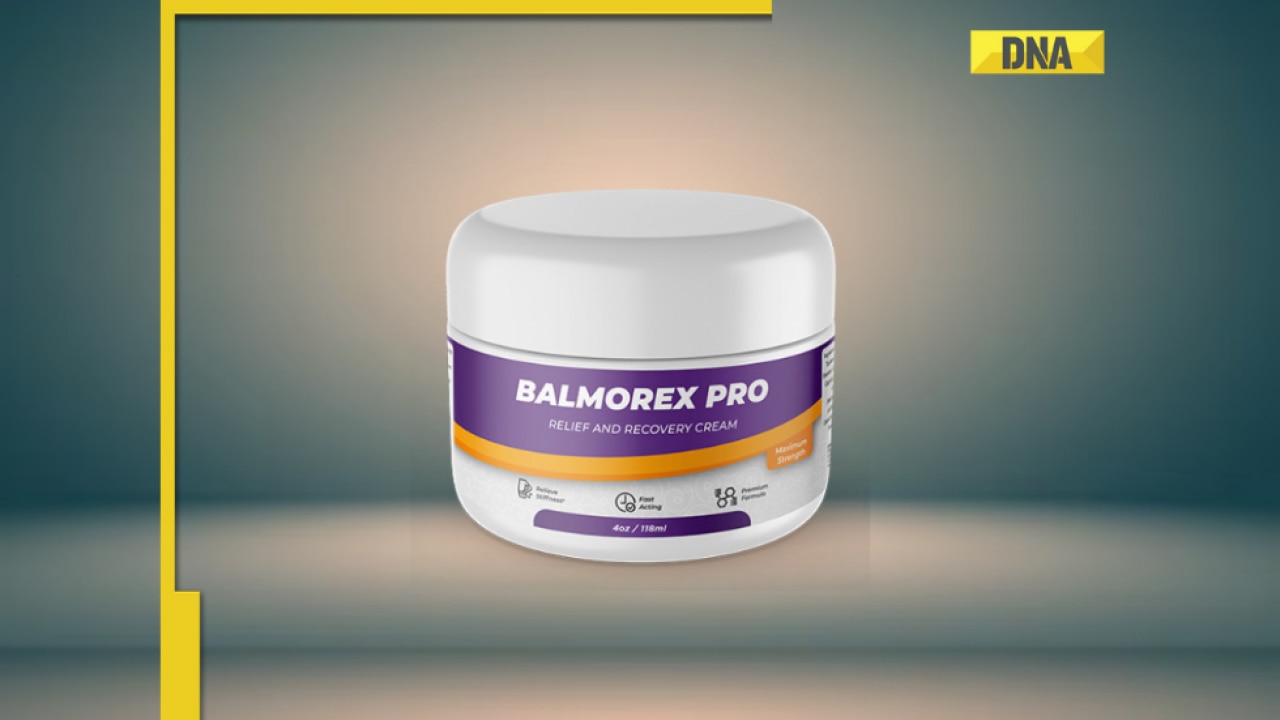


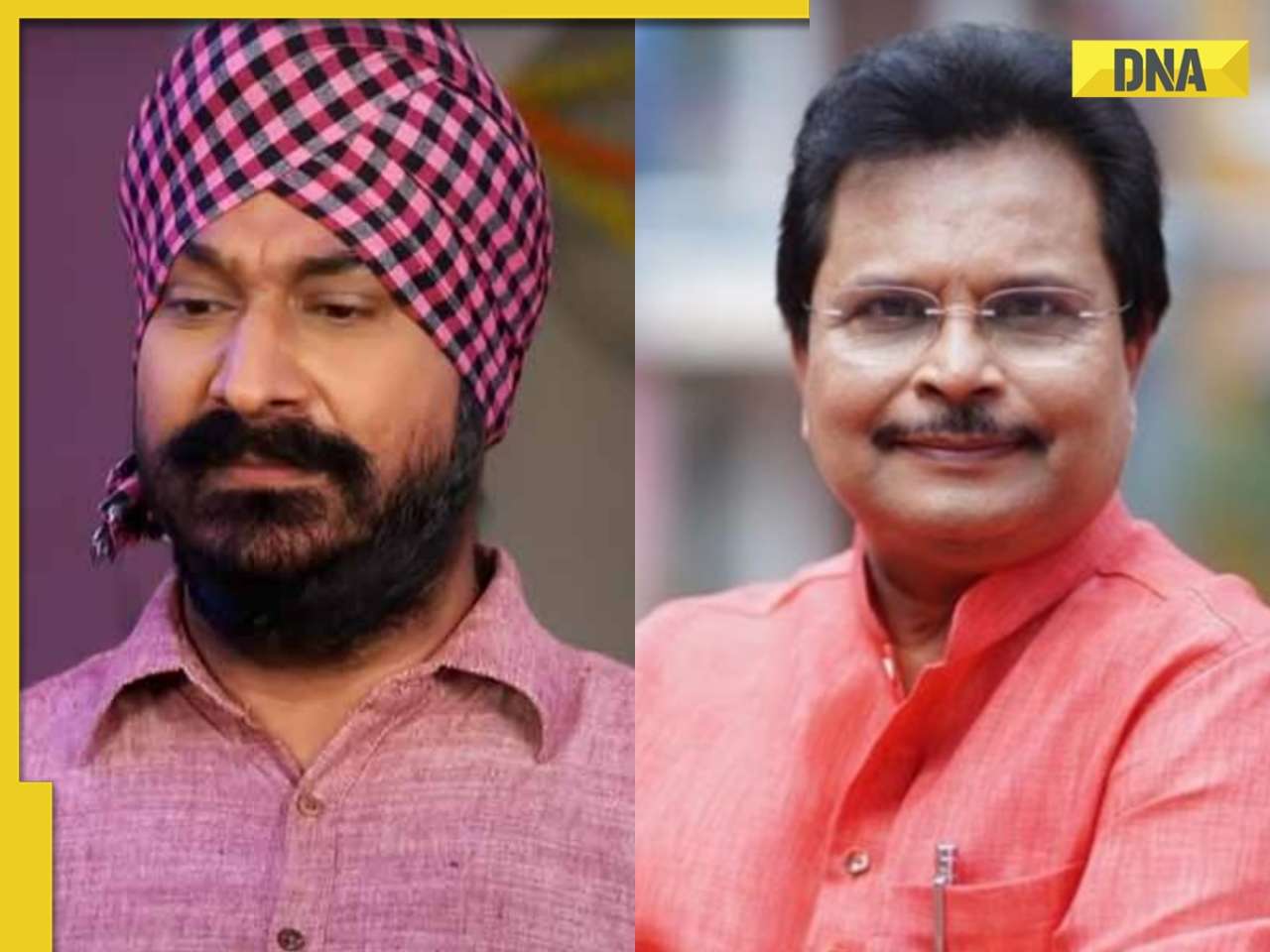



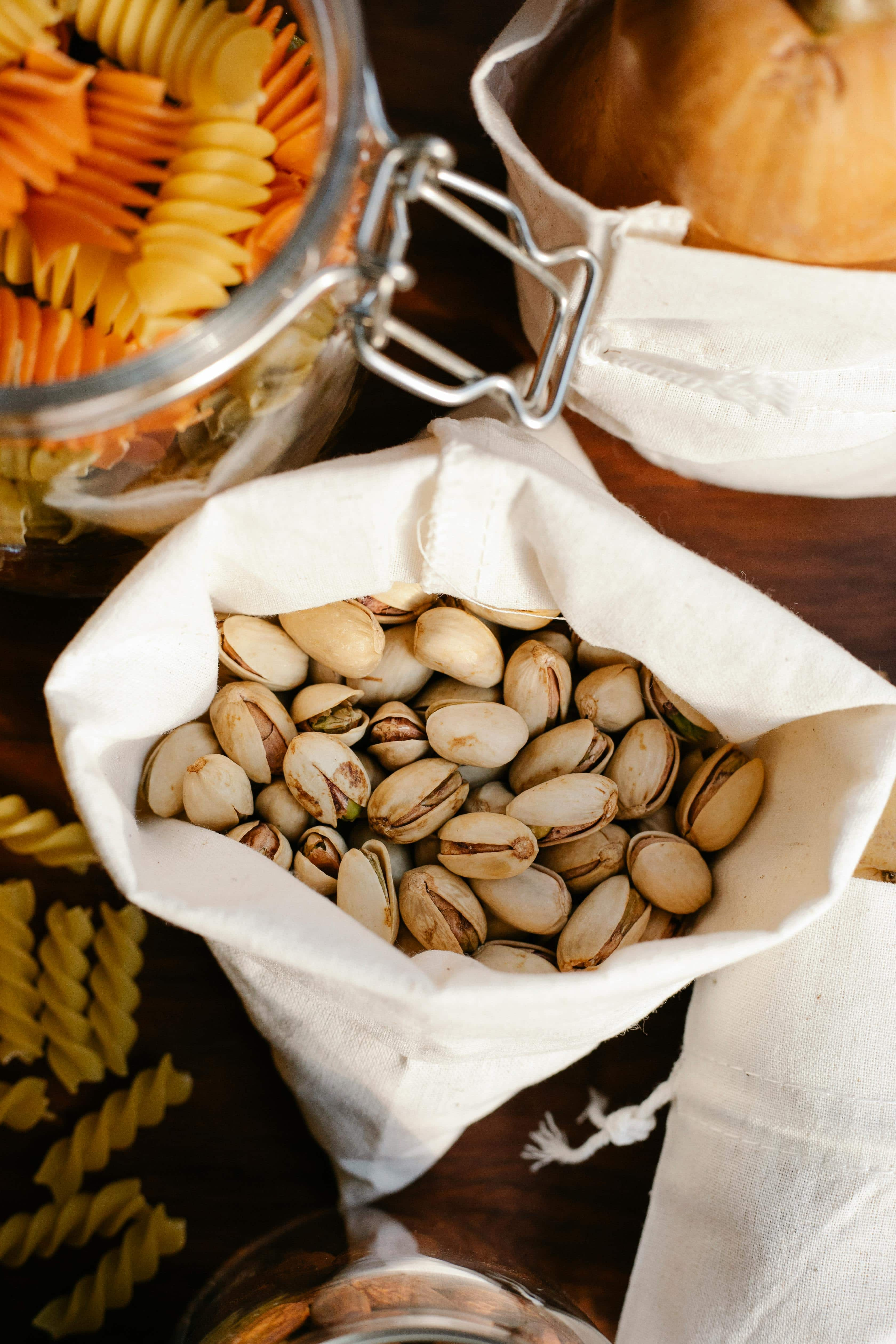

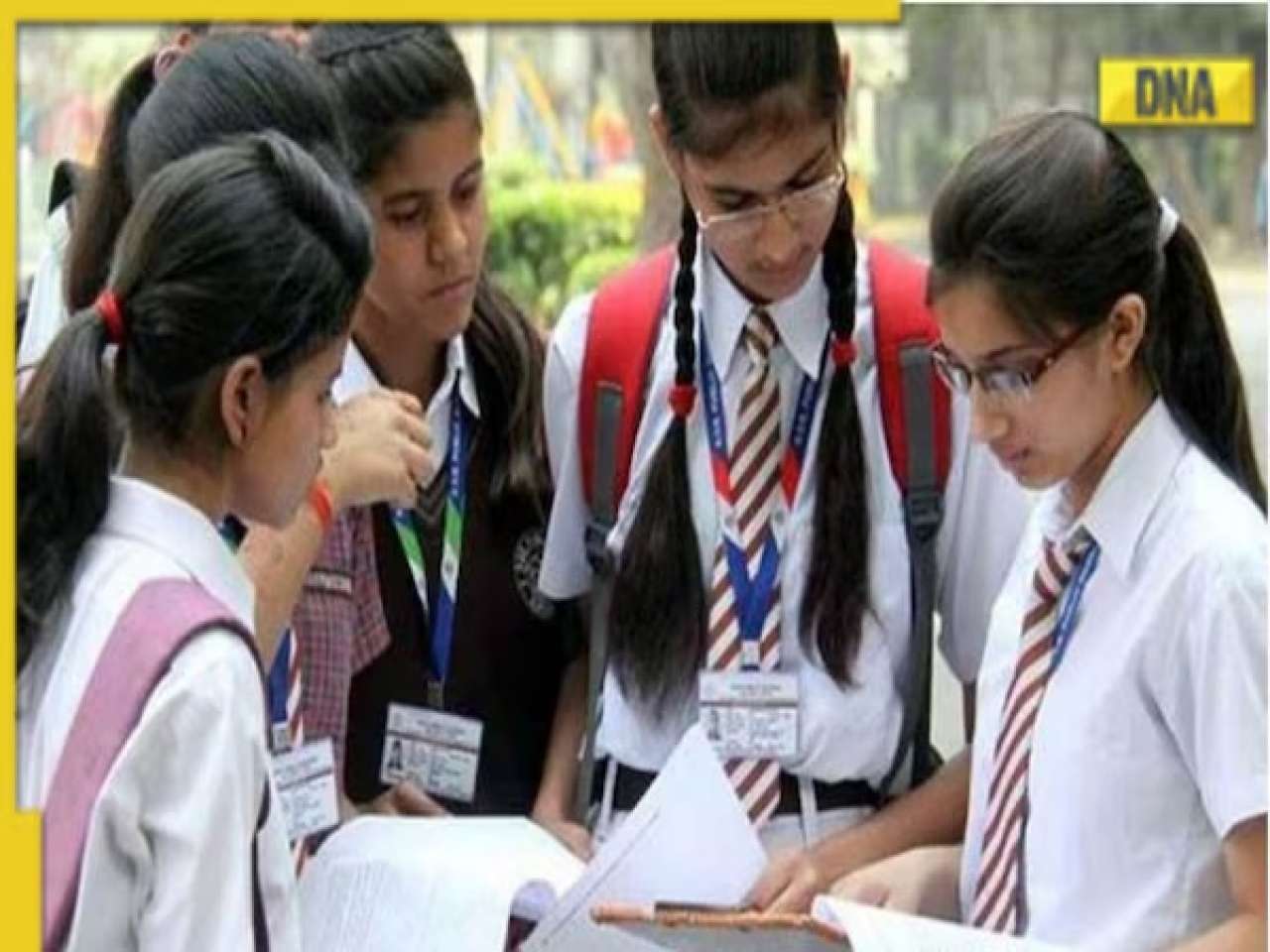

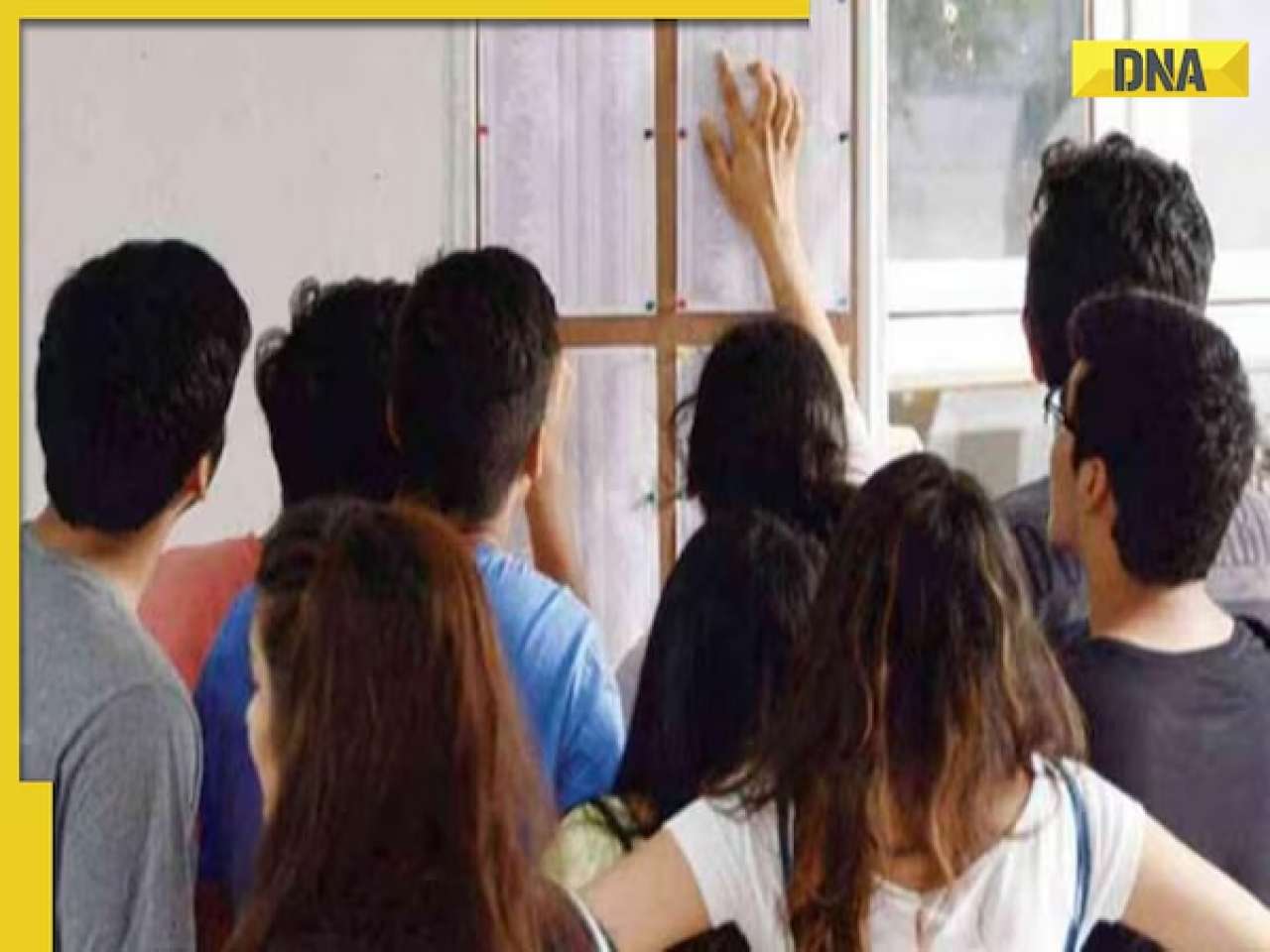
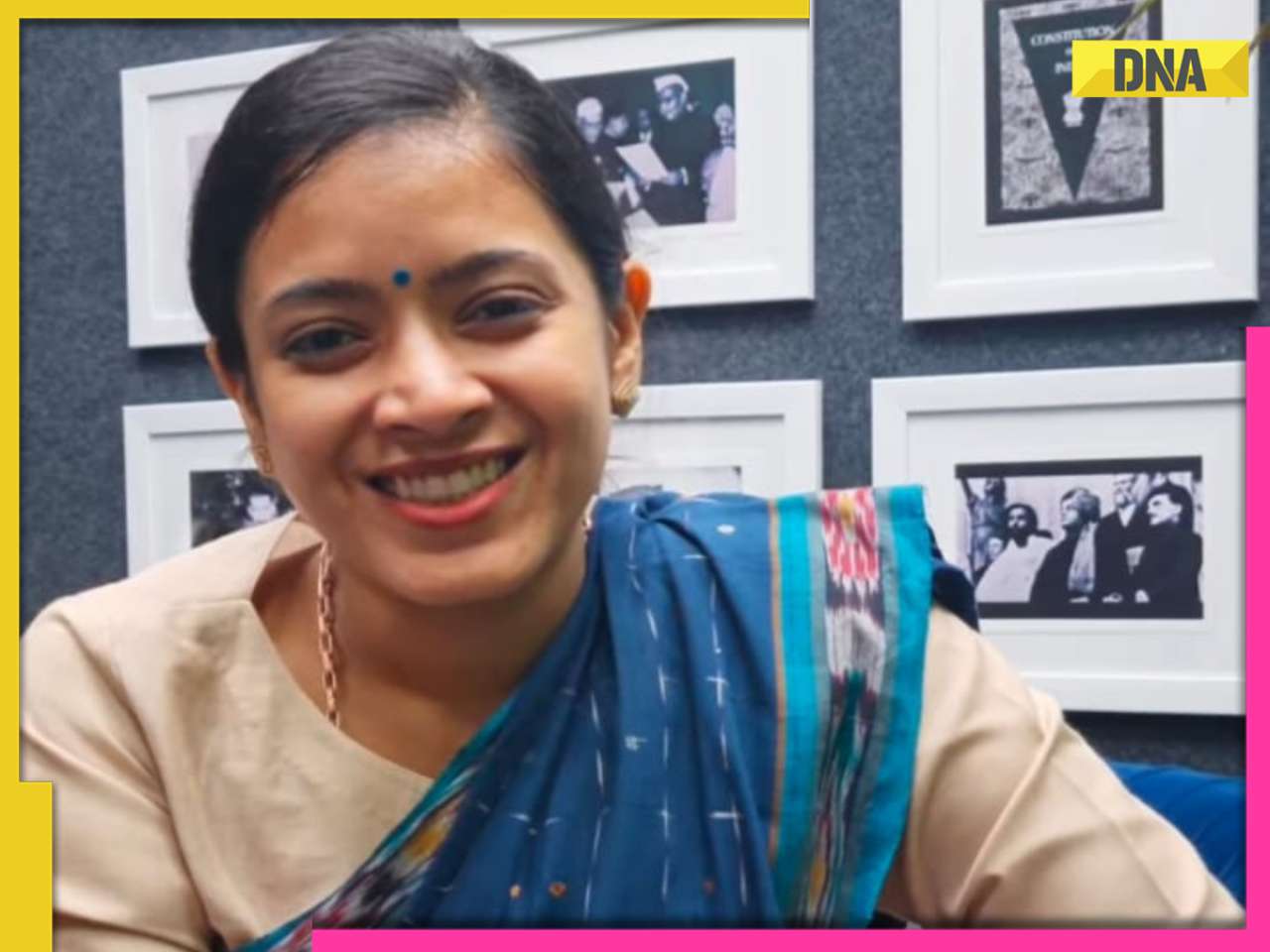



















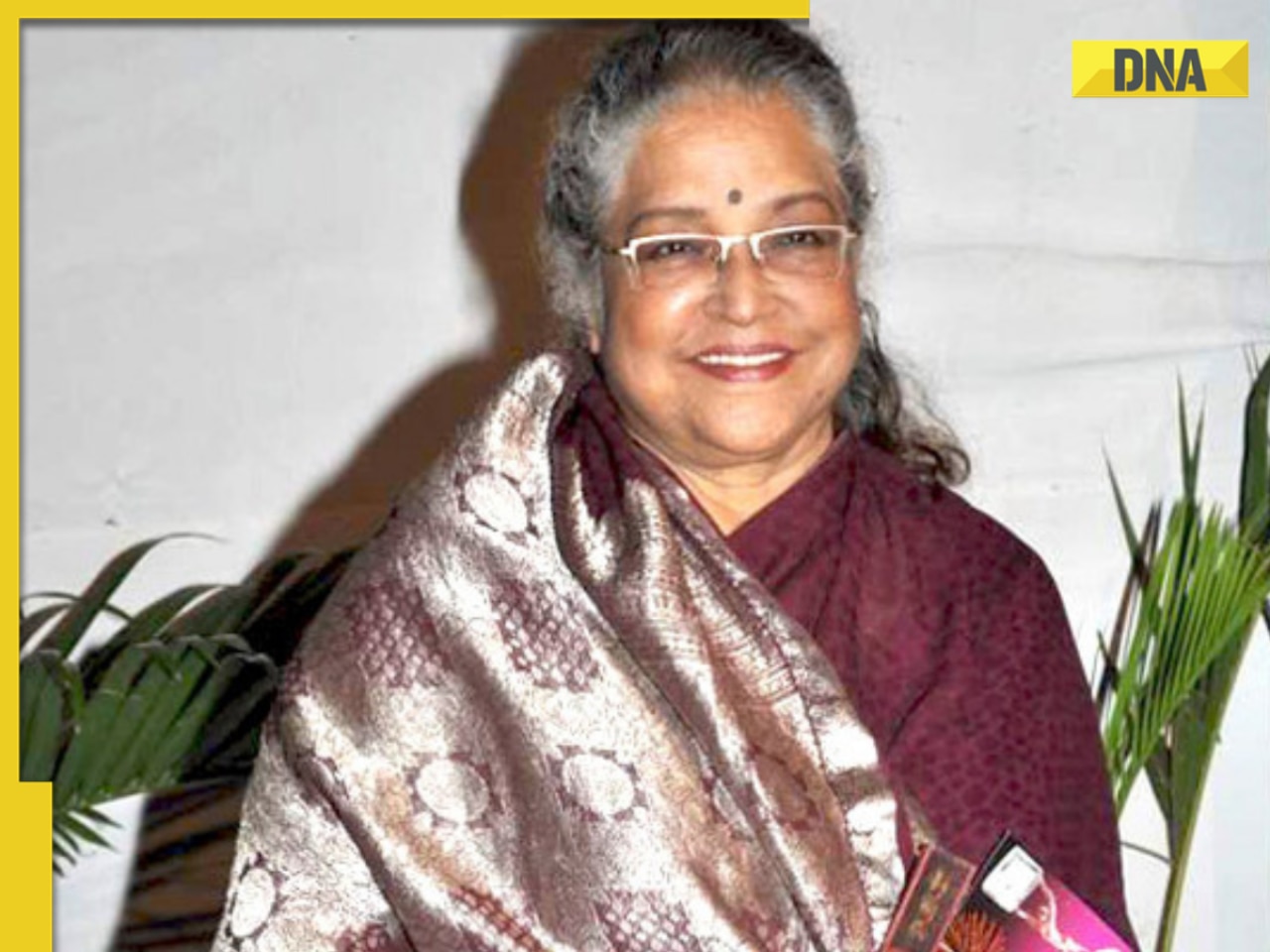

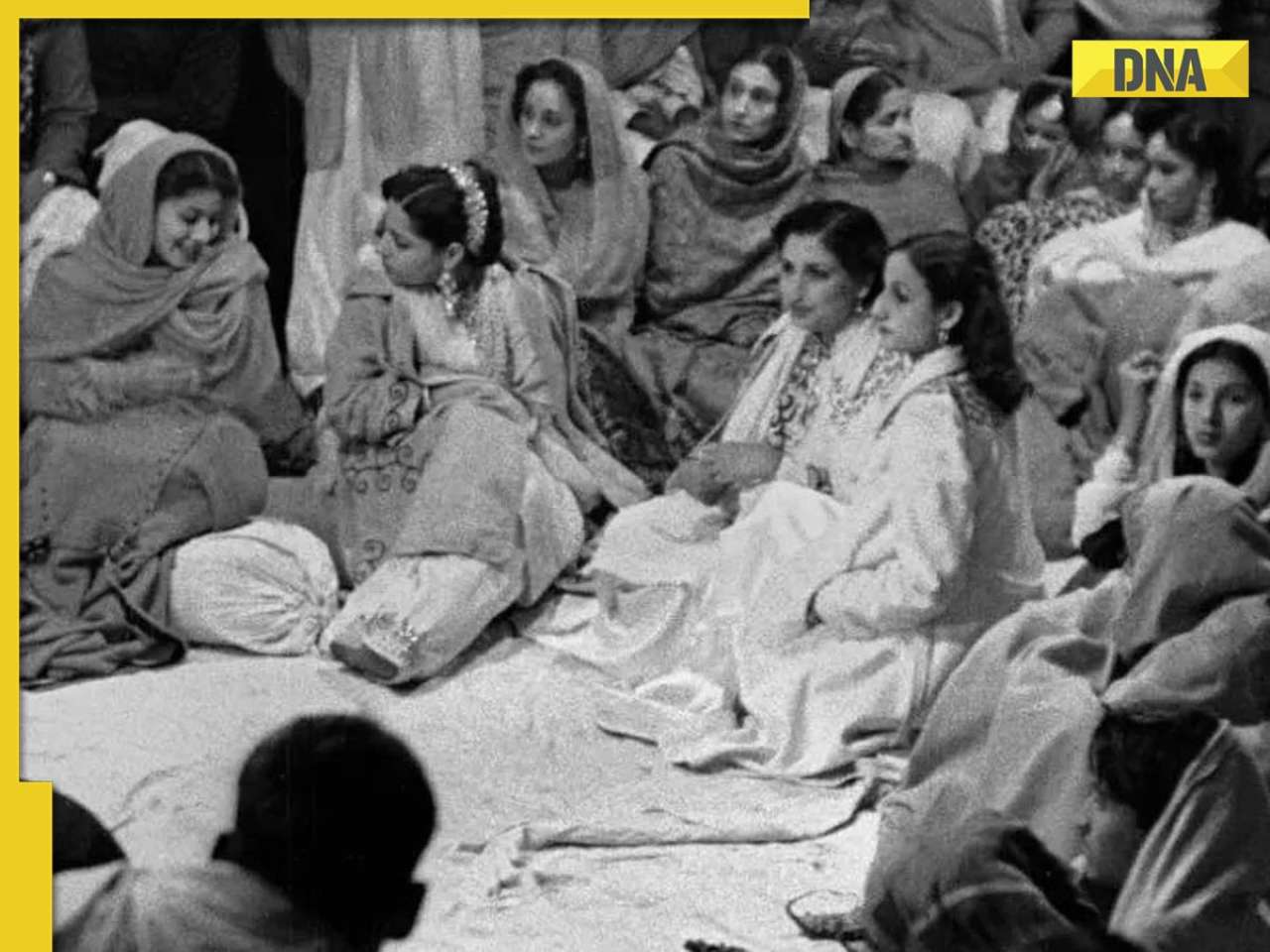









)
)
)
)
)
)